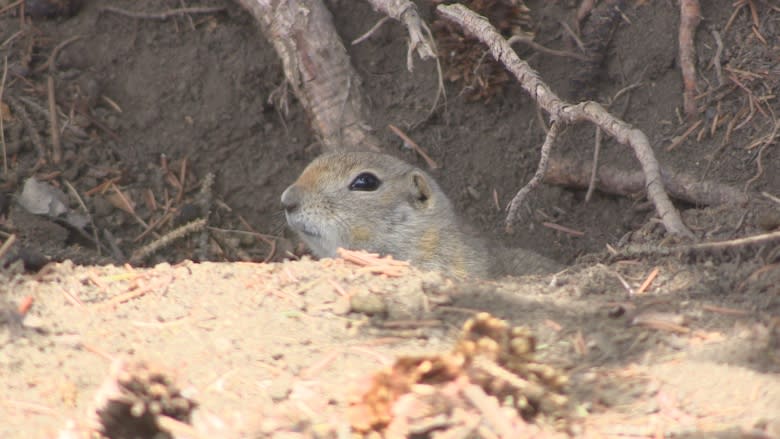Concerns raised about gopher poison used by City of Regina
A Regina woman is raising concerns about poison being used by the City of Regina to control gopher populations.
Diana Ghikas lives in Kinsmen Park South and recently came across several dead gophers near her home.
"My concerns are exposure, accidental exposure to people, pets, wildlife and also water, because they have some bait in the drainage canal," said Ghikas.
The poison, Rozol, is an anticoagulant that causes the animals to die from haemorrhaging. According to a report submitted to the Saskatchewan Agriculture Development Fund in 2009, it can take hours or days to kill a gopher. As a result, the gophers can die away from where the poison has been deployed, which is a concern for Ghikas.
The 2009 report, a review of control methods in Saskatchewan, says public concerns about exposure relate to accidental consumption of poisoned animals.
Sean Raison, acting director of the city's parks and open space department, says the city does not currently have concerns about accidental exposures to pets or humans, though they have heard some concerns from citizens like Ghikas.
"Our spring baiting program is just wrapping up today as a preventative measure so that gophers don't start creating holes in public spaces or athletic fields, which can cause safety concerns," said Raison.
Raison said the city does not plan to change the program in the near future. However, the program and methods are evaluated each year.
Rozol is applied underground and the department will monitor the areas for 14 days following the first use of the bait. During those 14 days the department will pick up gopher carcasses and re-position any visible product back underground, according to Raison.
"We're very diligent at mitigating risks," said Raison.
But Ghikas fears dogs could potentially dig up the gophers and be harmed by consuming them. She feels it would be hard for crews to find every gopher that has died through ingesting Rozol. Since the poison can take days to kill an animal, the gophers could get into backyards, community gardens and other nearby areas, she said.
"I think poison bait is not an option in this environment," said Ghikas. "I would like to see them use other options, such as carbon monoxide cartridges, which has no residual poison in the ground."
She also suggested natural predators, like red-tailed hawks, could be used.
"I hope they change their minds about a few things," said Ghikas.
According to Lesley Sawa, a veterinarian at the Animal Clinic of Regina, there are some concerns over pets and wildlife consuming gophers killed by Rozol.
"There is a mild concern about secondary poisoning, which means a pet has ingested a gopher that has died," said Sawa. "With the rare exception of puppies, kittens or a small dog or a cat, secondary poisoning is extremely unlikely."
Sawa advises that if a pet does ingest a gopher or any of the poison it can be treated with the antidote Vitamin K.
As long as the poison is directly ingested, and it is kept to locations where only gophers can access it — in gopher holes, tunnels and underground — Sawa said it does not pose a threat to pets.



